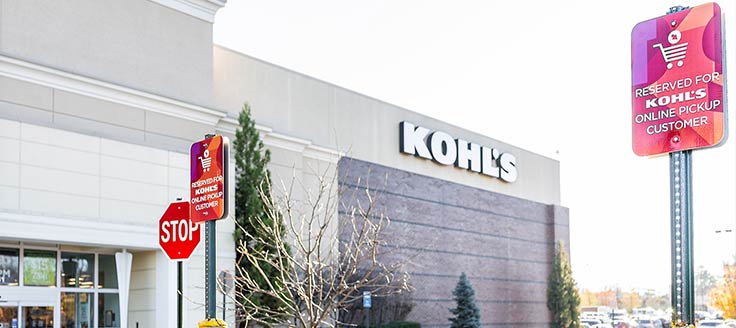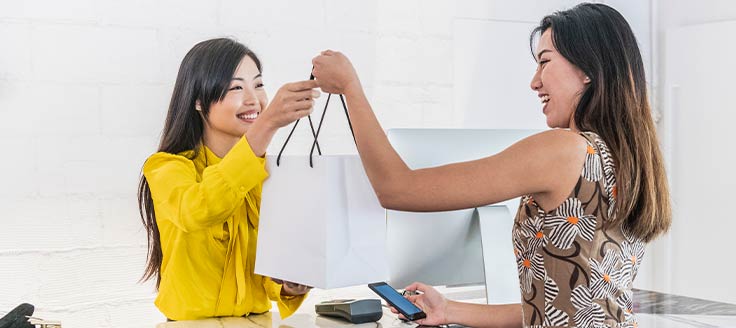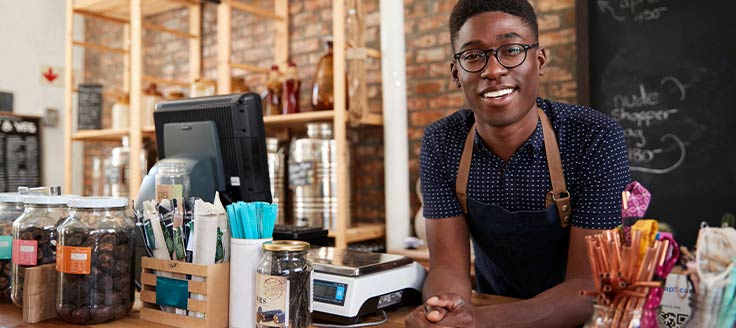Time is of the essence for today’s omnichannel shopper, and in store pickup creates a seamless experience that is giving the brick-and-mortar store a fighting chance by reintroducing human touchpoints to modern shoppers.
There is a downside to this practice, too, but the question is, do the pros outweigh the cons?
Store Pickup on the Rise
Business Insider Intelligence reports that 68% of consumers in the U.S. are opting for a new-ish trend in retail — buy online, pick up in store (BOPIS). This practice started years ago as casual dining restaurants began offering curbside pickup for their guests.
The success of curbside pickup quickly transitioned to the grocery industry as big-name stores such as Walmart started to use this perk as a way to stand out in a sea of competition. Bloomberg reports that Cowen & Co. estimates that grocery store pickup will be a $35 billion business in 2020. Today, as brick-and-mortar retail stores rethink their organizational strategies to remain competitive, BOPIS gives them a way forward.
Retail customers enjoy the convenience of shopping at an online store and the time and cost-saving benefits of picking up their purchase at a physical store location. Eighty-two percent of buyers can get their item in just 1 day, according to Microsoft Advertising research.
In addition, the trend is encouraging more customers to shop online. Research from Business Insider Intelligence indicates that 50% of shoppers decide where to buy based on whether or not stores offer this option.
Benefits of Buy Online, In Store Pickup
While the convenience and time-saving benefit of BOPIS appeal to consumers, this option also offers added security and quality assurance for their purchases. Despite these transactions happening online, retailers can still capitalize on the advantage of customers coming inside their stores for
Benefits for Shoppers
BOPIS is a hybrid solution. It offers the convenience of shopping online and the ability to compare prices before buying as well as maintaining the tactile enjoyment of in-store shopping. You can’t smell perfume samples online, or accidentally stumble across that perfect picture frame when you buy at Amazon.
In store pickup also provides buyers with a sense of instant gratification that comes with shopping in a store. They can enjoy the feeling of being served personally in a store, too.
For many consumers, the appeal of in store pickup is that it saves on shipping fees. The expense of shipping is one of the primary reasons for online cart abandonment or dropping the sale in the late stages of the purchasing process.
Also, no matter how fast Amazon ships items, it doesn’t compare to the advantage of the same day, in store pick up. It’s an option that fills a void for Amazon shoppers who don’t want to wait even 2 days to get their purchase.
There are more practical reasons the in store pickup approach works for consumers; an increasing number of people are victims of “porch pirates” — people who steal packages delivered to a home’s porch or doorstep. In 2019, around 36% of people reported having a package stolen after it was delivered to their home. In store pickup eliminates the porch pirate problem.
Going to the store to get their purchase also offers buyers better quality assurance. They pick up their Items within walking distance of customer service, and customers can personally confirm that their order contains the correct items. They can try on clothes or shoes while in the store to ensure proper fit and check that any other purchased items are in good shape.
That sense of uncertainty that comes with buying online disappears when you can immediately return the product or get a replacement for it. Having these options builds customer trust and loyalty.
Benefits for Retailers
For retailers, BOPIS eliminates the hassle and expense of shipping to their customers, but the benefits go beyond just cost savings. In store pickup is an opportunity for retailers to generate additional revenue.
Brick-and-mortar stores like Kohl’s struggle to get people to walk through their doors. However, the online order pickup counter placed at the back of the store ensures shoppers will walk through — and see — thousands of pieces of merchandise before getting their packages. By having online shoppers walk through the store, the entire floor becomes a strategic marketing tool to encourage impulse buying. Increased foot traffic improves opportunities for conversions and automatically increases the average order value. With an in store pickup, 1 online purchase could easily convert into multiple purchases.
The Cons for Retailers
A business considering BOPIS needs to think about whether they have the resources available for it to work correctly. If BOPIS fails, it’s usually due to poor implementation and lack of optimization.
Staffing Concerns
Do you have enough employees to fill the online orders and walk them to a customer or pickup area? If not, what will it cost to add personnel to make the process work smoothly? For small companies, the return on the investment might not make sense.
Potential Space Issues
Space is another critical issue. How much floor space does the business have to give up to create a pickup counter or to install lockers? You’ll need space to store the products until pickup as well. The combination might take away too much from the floor space to be worth it.
Customer Comfort
Convenience matters with buy online, pickup in store strategies, but lack of signage and guidance can make the experience more frustrating than it’s worth. If the customer leaves unhappy, they are likely to give up on the retailer and take their in store pickup business somewhere else.
Because foot traffic is critical, the store environment becomes a significant issue. Poor customer service, long checkout lines, and messy displays lessen the impact. If the customer picks up additional items, they want to buy them fast. Retailers risk losing the conversion when someone has to stand in another line to purchase their impulse buys.
Cost of Lockers and Pickup Area
Lockers will eliminate some of the staffing and storage issues, but installing them creates structural ones. What type of lockers are best suited for the company, what do they cost and how do you give customers access to them? Will that require adding and maintaining new technology on top of everything else?
Accurate Inventory Tracking
For BOPIS to work, it’s necessary to know precisely where every piece of inventory is and how long it will take to get it ready for pickup. That will mean a comprehensive inventory tracking system, so the business knows what’s available and where each piece is located. If your current inventory falls short of what you need for a successful in store pickup experience, you might need to spend money to update your current tracking system.
Fraud Risk
Unlike orders shipped to homes, it can be difficult to make sure the right customer picks up a package that is paid for in advance. Businesses will bear the brunt of financial liability, too, for fraudulent activity. You’ll need to develop a system for customer identification before releasing a package.
While in story pickup has plenty of advantages, for some businesses, the return on investment isn’t there.
Businesses Offering In Store Pickup
Order online pick up in store is becoming the norm in retail; some of the more prominent participants include:
- Bloomingdales
- CVS
- Home Depot
- Kohl’s
- Lowe’s
- PetSmart
Of course, it’s a staple option for big box brands like Kmart, Target, and Walmart, too. Even Amazon has a version of in store pickup thanks to their purchase of Whole Food Stores. Some put the item in a locker and allow the in store pickup without the consumer going to a counter or interacting with staff. Others, like Kohl’s, provide a more personal touch by having an employee bring the item to the customer at a set location in the store.

Is In Store Pickup Right for Your Business?
Although in store pickup is an effective solution, there are some things to consider before implementing it in your business. The goal is to find the best way to offer convenience to your customers, so ask yourself some questions.
- Is this the best way to give your buyers convenience that stands out? For example, curbside pickup makes more sense for grocery stores.
- Do you have the staffing and storage space to make this a practical choice? If you lose half of your floor space to storage, it might not worth it.
- Do you have a cost-efficient way to get purchased items to the store or packed up and ready for pickup? It doesn’t make much sense if you lose all your profit to shipping costs.
- Do you have the inventory stores to make pickup a wise choice? If you sell out of products often, the answer might be no.
Buy online, pickup in store is something even small stores can launch if they do it right. Whether they should or not depends on many factors, but, so far, it has proven to be a practical approach to bringing people into a store and getting conversions.










